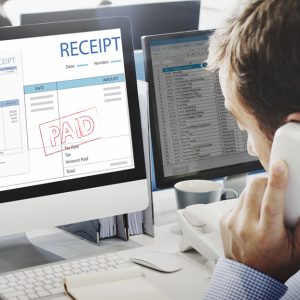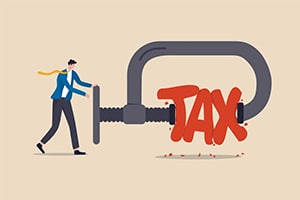
Business Advisory Services
Everything you need to help you launch your new business entity from business entity selection to multiple-entity business structures.
Hey - Our site just had a makeover and we are sorting through the hiccups!
Hey - Our site just had a makeover and we are sorting through the hiccups!

Everything you need to help you launch your new business entity from business entity selection to multiple-entity business structures.

Designed for rental property owners where WCG CPAs & Advisors supports you as your real estate CPA.

Everything you need from tax return preparation for your small business to your rental to your corporation is here.

WCG’s primary objective is to help you to feel comfortable about engaging with us
Table Of Contents

 WCG (formerly Watson CPA Group) and our team of business consultants field a lot of questions about home offices and one of them is home office depreciation. We do not believe home office depreciation is a reimbursable expense given the code, and while others might think so we remain practical in our approach.
WCG (formerly Watson CPA Group) and our team of business consultants field a lot of questions about home offices and one of them is home office depreciation. We do not believe home office depreciation is a reimbursable expense given the code, and while others might think so we remain practical in our approach.
Let’s first explore accountable plans and how they play into the home office depreciation issue. Section 1.62-2 titled Reimbursements and Other Expense Allowance Arrangements defines how reimbursements to employees must be handled. Employee reimbursements are not considered income provided the expense allowance arrangement requires the employee to substantiate the expenses covered and then requires the employee to return excess reimbursements to the payor (the company). This is echoed in IRS Publication 15 as well.
In addition, if these two requirements are not met, the reimbursement is considered income and is subject to income taxes, Social Security and Medicare taxes, and unemployment taxes. Yuck.
An expense must be considered ordinary and necessary for it to be reimbursed. According to the IRS website–
To be deductible, a business expense must be both ordinary and necessary. An ordinary expense is one that is common and accepted in your trade or business. A necessary expense is one that is helpful and appropriate for your trade or business. An expense does not have to be indispensable to be considered necessary.
Is a home office ordinary and necessary? For most small business owners, the answer is Yes.
There are several famous tax quotes, and one comes from 1934. In New Colonial Ice Co. v. Helvering, 292 U.S. 435, 440 (1934), the court states, “Whether and to what extent deductions shall be allowed depends upon legislative grace; and only as there is clear provision therefor can any particular deduction be allowed.” The IRS and the Tax Court love to quote this as many times as they can. Many Tax Court decisions have this buried in the discussion somewhere-
 As a general rule, the Commissioner’s determination of a taxpayer’s liability in a notice of deficiency is presumed correct, and the taxpayer bears the burden of proving that the determination is incorrect. Rule 142(a); Welch v. Helvering, 290U.S. 111, 115 (1933). Tax deductions are a matter of legislative grace, and the taxpayer bears the burden of proving entitlement to any deduction claimed. Rule 142(a); INDOPCO, Inc. v. Commissioner, 503 U.S. 79, 84 (1992); New Colonial Ice Co. v. Helvering, 292U.S. 435, 440 (1934).
As a general rule, the Commissioner’s determination of a taxpayer’s liability in a notice of deficiency is presumed correct, and the taxpayer bears the burden of proving that the determination is incorrect. Rule 142(a); Welch v. Helvering, 290U.S. 111, 115 (1933). Tax deductions are a matter of legislative grace, and the taxpayer bears the burden of proving entitlement to any deduction claimed. Rule 142(a); INDOPCO, Inc. v. Commissioner, 503 U.S. 79, 84 (1992); New Colonial Ice Co. v. Helvering, 292U.S. 435, 440 (1934).
Since the burden of proof for a deduction rests on the taxpayer, basic record keeping requires that you keep adequate records such as a log, diary or some other journal (like QuickBooks, Xero, Excel) which records the date, who you paid and the amount. In addition, this must be corroborated or supported with documentary evidence which is usually receipts, canceled checks or invoices, and at times credit card statements. So, two things; adequate records and documentary evidence. You might be called upon to provide the business connection or purpose (recall the ordinary and necessary rules above).
That is the basic of the basics. There are several “levels” of substantiation, if you will, and one is for Section 274(d) expenses which is broken further down into three categories (used to be four categories until the Tax Cuts and Jobs Act of 2017 removed entertainment, amusement, etc.)-
In addition to the basic record keeping requirements above, these expenses require you to record in real time the business purpose or connection such as “Met with Suzie to discuss proposal.”
Another level of substantiation is for per diem and mileage reimbursements. These are specifically called out in Section 1.62-2(d)(1) and IRS Publication 15. The Pub reads in part, “You may reimburse your employees by travel days, miles, or some other fixed allowance under the applicable revenue procedure. In these cases, your employee is considered to have accounted to you if your reimbursement doesn’t exceed rates established by the federal government.”
What the heck does this mean? This means that if you can demonstrate that your travel was business related, took you away from home and you required substantial rest (such as an overnight stay in a hotel), you do not have to substantiate your actual expenses to your employer as it relates to per diem reimbursements. Same thing for mileage; you do not have to substantiate that your actual expenses equaled or exceeded the mileage reimbursement provided the rate is within federal guidelines.
Sidebar on per diem: Employees of corporations are eligible for per diem allowances, reimbursements and deductions unless this same employee owns more than 10% of the corporation. This means that most S corporation shareholders are hosed, and can only deduct (or get reimbursed) for actual meal costs. IRS Revenue Procedure 2011-47 has this limitation and IRS Publication 463 states in part “A per diem allowance satisfies the adequate accounting requirements for the amount of your expenses only if…you are not related to your employer.” Owning more than 10% is considered being related to your employer. Yes, if your spouse owns 95% and you own 5%, you still own 100% because of attribution.
Home offices do not require the level of substantiation that travel, meals, automobiles, gifts and other listed property require. However, the rules of substantiation according to Section 1.162-17 Reporting and Substantiation of Certain Business Expenses of Employees states that the employee must have paid for or incurred the expense to be reimbursed. Additionally, according to the IRS website the burden of proof rests with the taxpayer-
The responsibility to prove entries, deductions, and statements made on your tax returns is known as the burden of proof. You must be able to prove (substantiate) certain elements of expenses to deduct them. Generally, taxpayers meet their burden of proof by having the information and receipts (where needed) for the expenses. You should keep adequate records to prove your expenses or have sufficient evidence that will support your own statement. You generally must have documentary evidence, such as receipts, canceled checks, or bills, to support your expenses. Additional evidence is required for travel, entertainment, gifts, and auto expenses.
So… let’s get back to the question of this article. Can I get reimbursed for home office depreciation? In our minds, the answer is No as we stated way back when. First, your home office as part of real property typically does not depreciate unless a nuclear waste dump buys the neighboring lot. In other words, you cannot prove nor support depreciation on real property since it historically doesn’t typically exist.
Second, if you did have depreciation, how do you substantiate that this is a real expense? The check you wrote for the home office was truly a check you wrote for a personal residence whose primary function was to be a personal home and not a business asset.
Sure, rental properties allow for depreciation but again that is a business deduction and not an employee reimbursement. Yes, we are splitting hairs. Sure, home offices deducted in connection with Schedule C and Form 8829 allow for depreciation. Again, Yes, but this is a deduction and not a reimbursement. Recall that a reimbursement has a much higher demand for substantiation and this is where being reimbursed for depreciation starts to fail.
Let’s also break down the value of reimbursing yourself for home office depreciation. You have a home worth $500,000 where the land is $110,000 and the structure is $390,000. Home office life has been determined to be 39 years according to the IRS, or in this case $10,000 per year. However, you must apply your office square footage as it relates to the overall home square footage. Let’s say your office is 150 square feet and your overall home is 3,000 square feet. This represents 5%.
So, you get reimbursed 5% of $10,000, or $500 annually. Assuming a 25% marginal tax rate between the IRS and the state combined, this put $125 in your pocket. Not bad. However, recall that when you sell the house you must recapture this depreciation; in other words, it is a part of your capital gains calculation and cannot be excluded with the primary residence exclusion. Depreciation is a tax deferral tool, not a tax savings tool. This is why many people change accountants right before they sell their house in the hopes that prior accumulated depreciation is forgotten.
At the end of the day, this is our opinion. There is nothing in the code that specifically prohibits the reimbursement of depreciation. Theoretically we believe you cannot be reimbursed for depreciation. Practically we say “Yeah, sure, sounds great.” We seriously doubt the IRS would not allow your $500 deduction based on our theory; they have much bigger things to worry about on your tax return like meals, mileage, travel and other non-sense where you probably don’t have good record keeping habits. They will gladly trade your $500 home office depreciation deduction knowing they are going to get it back one day for the current disallowance of your meals deduction.
We also understand that Bradford Tax Institute says Yes to being reimbursed for home office depreciation. While we respect what they provide to the tax professional community and their advocacy for small business owners, at times their approach is a bit cavalier. For example, they recommend selling your primary residence to an S corporation just prior to converting it into a rental property so you can capture the $500,000 capital gains exclusion on primary residences. Theoretically this sounds amazing. Practically, we wonder if the IRS and Tax Court would see it for what it is; a transaction that appears arms-length in form but fails in substance. Again, we love those guys at Bradford; they do wonderful work but not everything that glitters is gold.
In summary, please don’t get us wrong… we are huge fans of home offices. The real meat of the reimbursement comes from the mileage reimbursement or actual automobile expenses since your commute is now from the bedroom to the basement, and every mile driven is a business mile. We are just not big fans of reimbursing for depreciation.

Learn about important tax deadlines, document checklists and due dates, and other essential tax return information.
Jason Watson, CPA is a Partner and the CEO of WCG CPAs & Advisors, a boutique consultation and tax preparation CPA firm located in Colorado, and is the author of Taxpayer’s Comprehensive Guide on LLC’s and S Corps and I Just Got a Rental, What Do I Do? which are available online and from mostly average retailers.
With state apportionment and tax return preparation, there are two issues at play- apportionment itself, and then state tax return
Table Of Contents

Tax planning season is here! Let's schedule a time to review tax reduction strategies and generate a mock tax return.

Tired of maintaining your own books? Seems like a chore to offload?
Did you want to chat about this? Do you have questions about us? Let’s chat!
The tax advisors, business consultants and rental property experts at WCG CPAs & Advisors are not salespeople; we are not putting lipstick on a pig expecting you to love it. Our job remains being professionally detached, giving you information and letting you decide within our ethical guidelines and your risk profiles.
We see far too many crazy schemes and half-baked ideas from attorneys and wealth managers. In some cases, they are good ideas. In most cases, all the entities, layering and mixed ownership is only the illusion of precision. As Chris Rock says, just because you can drive your car with your feet doesn’t make it a good idea. In other words, let’s not automatically convert “you can” into “you must.”
Let’s chat so you can be smart about it.
We typically schedule a 20-minute complimentary quick chat with one of our Partners or our amazing Senior Tax Professionals to determine if we are a good fit for each other, and how an engagement with our team looks. Tax returns only? Business advisory? Tax strategy and planning? Rental property support?

Everything you need to help you launch your new business entity from business entity selection to multiple-entity business structures.

Designed for rental property owners where WCG CPAs & Advisors supports you as your real estate CPA.

Everything you need from tax return preparation for your small business to your rental to your corporation is here.

WCG’s primary objective is to help you to feel comfortable about engaging with us
